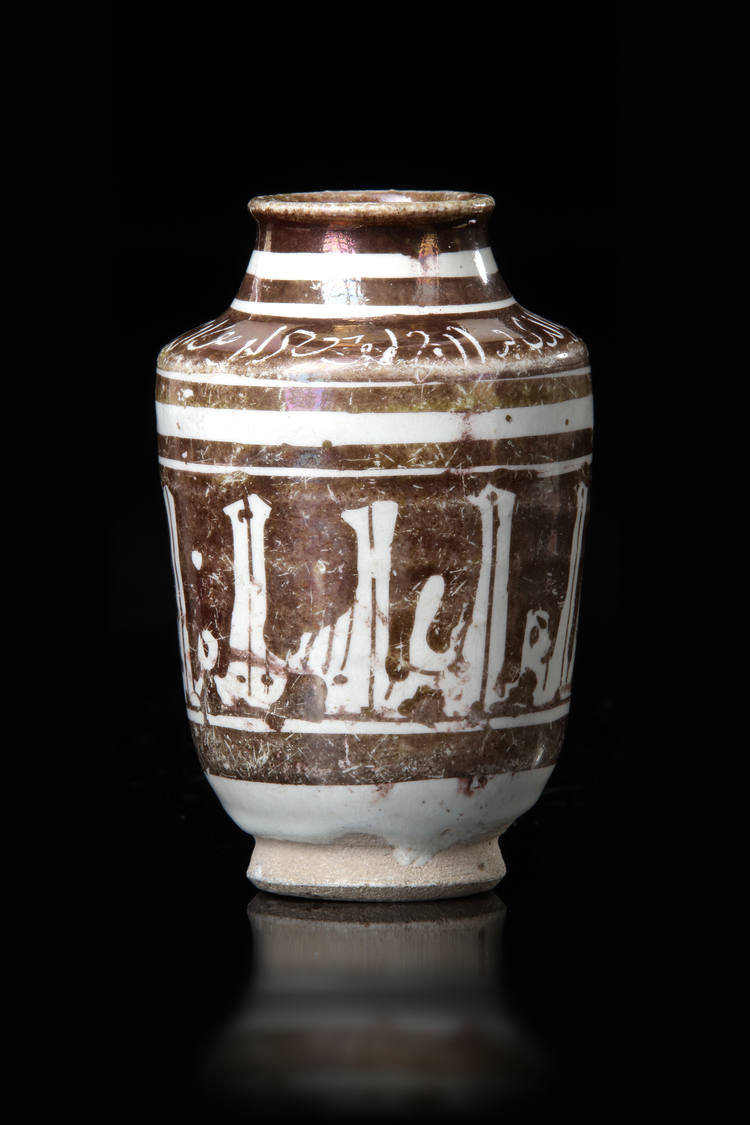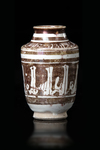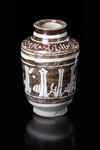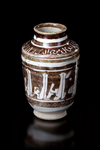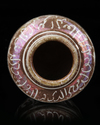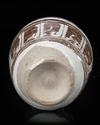A KASHAN LUSTRE ALBARELLO, PERSIA, 12TH-13TH CENTURY
Cylindrical pot supported by a ring foot, small shoulder and low neck with rim round. The decoration reproduces an inscription in Kufic, which repeats the word several times 'Allah' on the body; while on the shoulder, the inscription, with a thinner and faster line, seems correspond to pseudo-Arabic (the painter probably did not speak or write this language). The texts are rendered in negative, since they come out in white (the color of the glaze) between the golden brown outlines of the paint. The function of these pots was, originally, that of containing spices (in Persia from the 9th century and in Syria a little later, from the12th century), but also drugs and ointments used in pharmacy. Called al-biram in Arabic (earthen pots), they will experience great fervor also in Europe under their Italian name of albarelli. The execution technique, called the metallic luster technique, is one of the most important contributions of Islamic craftsmen to the development of ceramics. Earth fired (light beige in this case) is first covered with a glaze (here creamy white) and then baked for the first time in an oxidizing atmosphere up to about 900o -1000o.
After cooling, the decoration is executed with a mixture based on silver oxides and/or of copper mixed with ocher and diluted with vinegar: the vase is then annealed, this time in a furnace without oxygen supply (reducing atmosphere), at a lower temperature (600o -700o). The glaze, softened by the heat, can thus incorporate the paint into a very thin and very shiny. Probably invented in Iraq, the center of power of the Abbasids, between the 8th and 9th centuries, this technique was widely used by the potters of Cairo under the Fatimid dynasty, in the 10th and 11th centuries, before being transmitted to the Iranian and Syrian worlds.
Complete, in excellent condition. Minor chipping or chipping (foot); paint very shiny, in places a little faded, especially on the inside.
Height: 12 cm.
PROVENANCE
Private collection, Switzerland
BIBLIOGRAPHY
Terres d’Islam, The Middle Eastern ceramic collections of the Ariana Museum in Geneva, Geneva, 2014, no. 63, p. 73-74; no. 68, p. 83. WATSON O., Ceramics from the Islamic Lands, Kuwait National Museum: The Al-Sabah Collection, London, 2004, pp. 289ff; p.p. 346ff.
